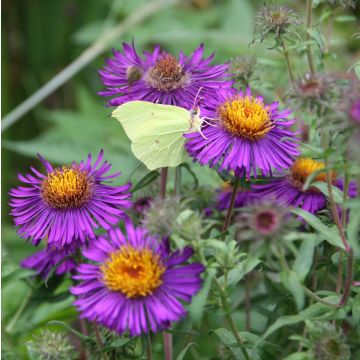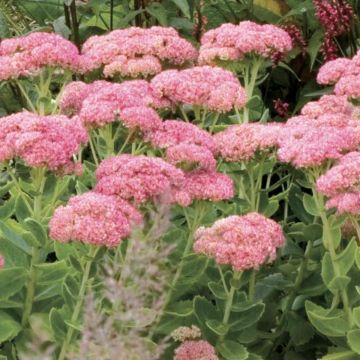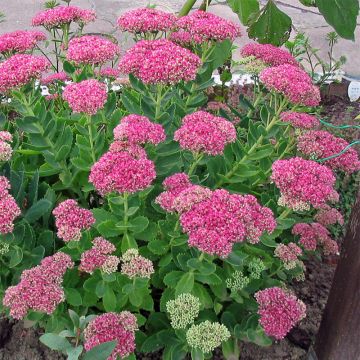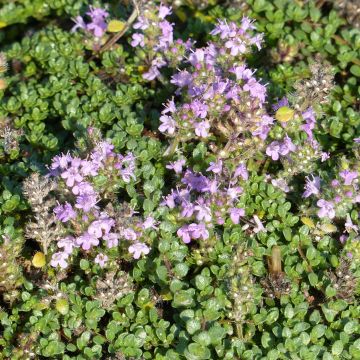

Aster novi-belgii Dauerblau


Aster novi-belgii Dauerblau


Aster novi-belgii Dauerblau
View more pictures
Hide images
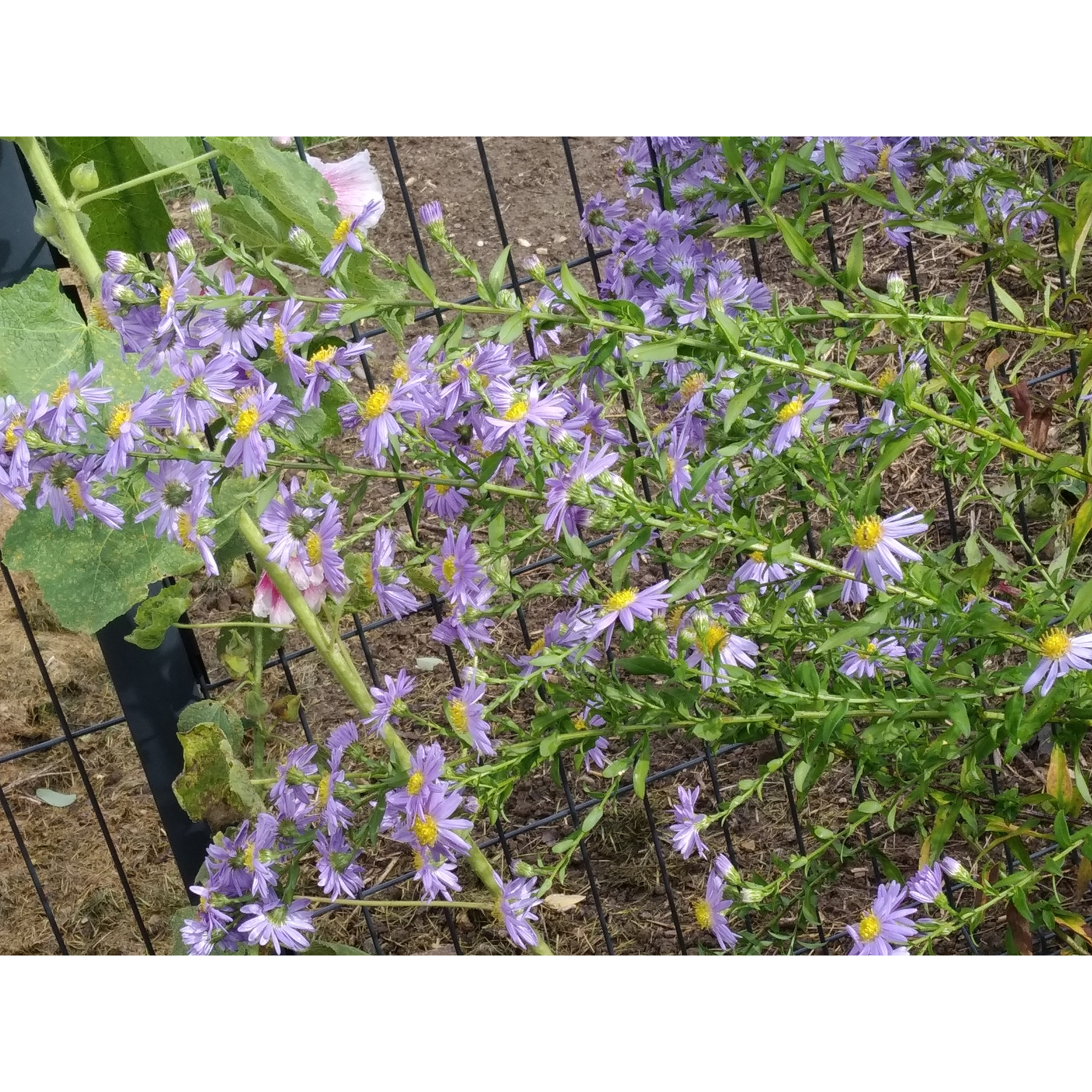
Barbara C.

Pale blue
Barbara C. • 60 FR
Aster novi-belgii Dauerblau
Aster novi-belgii Dauerblau
New York Aster, Michaelmas Daisy
We'll see next autumn, but vine-plant vigorous and I haven't experienced any disappointment in over ten years of orders!!!
Marie Pierre, 26/09/2020
Special offer!
Receive a €20 voucher for any order over €90 (excluding delivery costs, credit notes, and plastic-free options)!
1- Add your favorite plants to your cart.
2- Once you have reached €90, confirm your order (you can even choose the delivery date!).
3- As soon as your order is shipped, you will receive an email containing your voucher code, valid for 3 months (90 days).
Your voucher is unique and can only be used once, for any order with a minimum value of €20, excluding delivery costs.
Can be combined with other current offers, non-divisible and non-refundable.
Home or relay delivery (depending on size and destination)
Schedule delivery date,
and select date in basket
This plant carries a 12 months recovery warranty
More information
We guarantee the quality of our plants for a full growing cycle, and will replace at our expense any plant that fails to recover under normal climatic and planting conditions.

Would this plant suit my garden?
Set up your Plantfit profile →
Description
The 'Dauerblau' New York Aster is a large recent variety with blue-purple flowers in September-October. Autumn wouldn't be the same season of colours without these perennials covered in their bright blue-violet stars. Rugged and easy to grow, this aster thrives in mediocre soil as long as it remains moist.
The 'Dauerblau' New York Aster belongs to the Asteraceae family. This hybrid originated from the Aster novi-belgii and is found along the east coast of North America, ranging from Newfoundland to Georgia. This perennial exhibits an upright, bushy habit from the start of spring. It reaches 1.40m (5ft) in height when in bloom, and spreads up to 1m (3ft) in width. The very generous flowering takes place in September and October. The inflorescence takes the form of a capitule with ligulate peripheral flowers that are blue-purple. The central flowers (the heart) are yellow-orange. This aster is a deciduous perennial with smooth, branching stems. The leaves are smooth and dense, sessile, lanceolate, and medium green. They measure 8-16 cm (3-6in) long and 3.5 cm (1in) wide, with rough edges and a dentate upper half.
Plant the 'Dauerblau' New York Aster in autumn or spring in ordinary, rich, and well-worked soil that retains moisture. It prefers a sunny exposure but tolerates partial shade, where it will have a slightly looser habit. Strong winds should be avoided as they may flatten the clumps. Once established it is best not to move it as it does not like change. In a flowerbed allow at least 50 cm (20in) spacing around the plant. Mulch the soil from June onwards and water in case of heatwaves. New York Asters are susceptible to powdery mildew, which manifests as a white powdery coating on the leaves. Spray preventively with Bordeaux mixture or another copper-based product. Divide the clumps every three years to ensure they remain floriferous and more resistant to disease. Do not replant the divisions in the same spot, and provide them with rich soil.
It is impossible to imagine gardens without aster beds or borders. Undemanding, they pair well with all other plants in the garden, such as Salvia microphylla or Crocosmia 'Meteore'. Both cheerful and melancholic, these perennials are a fixture of the autumn season and accompany the splendour of its foliage. Try combining blue asters with the 'Grace' Smokebush or dwarf winged euonymus: the colour combination is stunning. These plants also make excellent cut flowers.
In Europe cultivars bloom around the month of October - the month of harvest - which earned the species the name 'grape harvester'. The 'Dauerblau' New York Aster (Symphyotrichum novi-belgii) is sometimes called "Virginia aster," but scientifically speaking, this species is no longer classified within the genus Aster by many experts.
Report an error about the product description
Aster novi-belgii Dauerblau in pictures




Flowering
Foliage
Plant habit
Botanical data
Aster
novi-belgii
Dauerblau
Asteraceae
New York Aster, Michaelmas Daisy
Cultivar or hybrid
Other Asters
View all →Planting and care
Plant 'Dauerblau' Virginia Aster in the autumn or spring in a regular, rich, and well-worked soil that retains moisture. It appreciates a sunny site but can tolerate partial shade, where it will have a slightly looser habit. Strong winds should be avoided as they could flatten the clumps. It is best not to move it once established as it does not tolerate change well. When planting in borders, leave at least 50 cm (20in) spacing around the plant. Mulch the soil from June onwards and water in case of heatwave. Aster novi-belgii are susceptible to powdery mildew, which appears as a white powdery coating on the leaves. Spray preventively with Bordeaux mixture or another copper-based product. Divide the clumps every three years to maintain their floriferousness and increase their resistance to the disease. Do not replant the divisions in the same spot, and provide them with a rich soil.
Planting period
Intended location
Care
-
, onOrder confirmed
Reply from on Promesse de fleurs
Similar products
Haven't found what you were looking for?
Hardiness is the lowest winter temperature a plant can endure without suffering serious damage or even dying. However, hardiness is affected by location (a sheltered area, such as a patio), protection (winter cover) and soil type (hardiness is improved by well-drained soil).

Photo Sharing Terms & Conditions
In order to encourage gardeners to interact and share their experiences, Promesse de fleurs offers various media enabling content to be uploaded onto its Site - in particular via the ‘Photo sharing’ module.
The User agrees to refrain from:
- Posting any content that is illegal, prejudicial, insulting, racist, inciteful to hatred, revisionist, contrary to public decency, that infringes on privacy or on the privacy rights of third parties, in particular the publicity rights of persons and goods, intellectual property rights, or the right to privacy.
- Submitting content on behalf of a third party;
- Impersonate the identity of a third party and/or publish any personal information about a third party;
In general, the User undertakes to refrain from any unethical behaviour.
All Content (in particular text, comments, files, images, photos, videos, creative works, etc.), which may be subject to property or intellectual property rights, image or other private rights, shall remain the property of the User, subject to the limited rights granted by the terms of the licence granted by Promesse de fleurs as stated below. Users are at liberty to publish or not to publish such Content on the Site, notably via the ‘Photo Sharing’ facility, and accept that this Content shall be made public and freely accessible, notably on the Internet.
Users further acknowledge, undertake to have ,and guarantee that they hold all necessary rights and permissions to publish such material on the Site, in particular with regard to the legislation in force pertaining to any privacy, property, intellectual property, image, or contractual rights, or rights of any other nature. By publishing such Content on the Site, Users acknowledge accepting full liability as publishers of the Content within the meaning of the law, and grant Promesse de fleurs, free of charge, an inclusive, worldwide licence for the said Content for the entire duration of its publication, including all reproduction, representation, up/downloading, displaying, performing, transmission, and storage rights.
Users also grant permission for their name to be linked to the Content and accept that this link may not always be made available.
By engaging in posting material, Users consent to their Content becoming automatically accessible on the Internet, in particular on other sites and/or blogs and/or web pages of the Promesse de fleurs site, including in particular social pages and the Promesse de fleurs catalogue.
Users may secure the removal of entrusted content free of charge by issuing a simple request via our contact form.
The flowering period indicated on our website applies to countries and regions located in USDA zone 8 (France, the United Kingdom, Ireland, the Netherlands, etc.)
It will vary according to where you live:
- In zones 9 to 10 (Italy, Spain, Greece, etc.), flowering will occur about 2 to 4 weeks earlier.
- In zones 6 to 7 (Germany, Poland, Slovenia, and lower mountainous regions), flowering will be delayed by 2 to 3 weeks.
- In zone 5 (Central Europe, Scandinavia), blooming will be delayed by 3 to 5 weeks.
In temperate climates, pruning of spring-flowering shrubs (forsythia, spireas, etc.) should be done just after flowering.
Pruning of summer-flowering shrubs (Indian Lilac, Perovskia, etc.) can be done in winter or spring.
In cold regions as well as with frost-sensitive plants, avoid pruning too early when severe frosts may still occur.
The planting period indicated on our website applies to countries and regions located in USDA zone 8 (France, United Kingdom, Ireland, Netherlands).
It will vary according to where you live:
- In Mediterranean zones (Marseille, Madrid, Milan, etc.), autumn and winter are the best planting periods.
- In continental zones (Strasbourg, Munich, Vienna, etc.), delay planting by 2 to 3 weeks in spring and bring it forward by 2 to 4 weeks in autumn.
- In mountainous regions (the Alps, Pyrenees, Carpathians, etc.), it is best to plant in late spring (May-June) or late summer (August-September).
The harvesting period indicated on our website applies to countries and regions in USDA zone 8 (France, England, Ireland, the Netherlands).
In colder areas (Scandinavia, Poland, Austria...) fruit and vegetable harvests are likely to be delayed by 3-4 weeks.
In warmer areas (Italy, Spain, Greece, etc.), harvesting will probably take place earlier, depending on weather conditions.
The sowing periods indicated on our website apply to countries and regions within USDA Zone 8 (France, UK, Ireland, Netherlands).
In colder areas (Scandinavia, Poland, Austria...), delay any outdoor sowing by 3-4 weeks, or sow under glass.
In warmer climes (Italy, Spain, Greece, etc.), bring outdoor sowing forward by a few weeks.



































